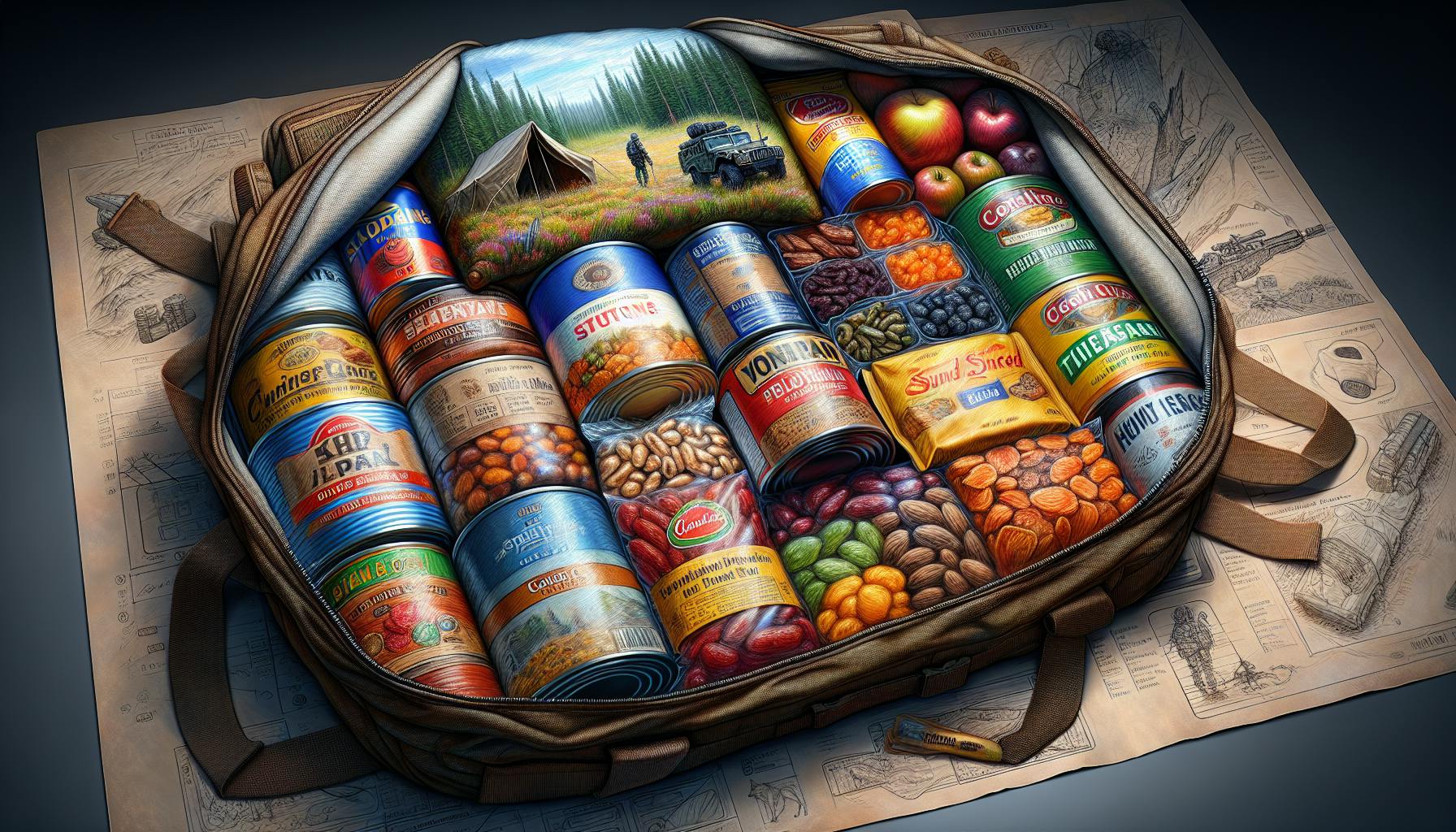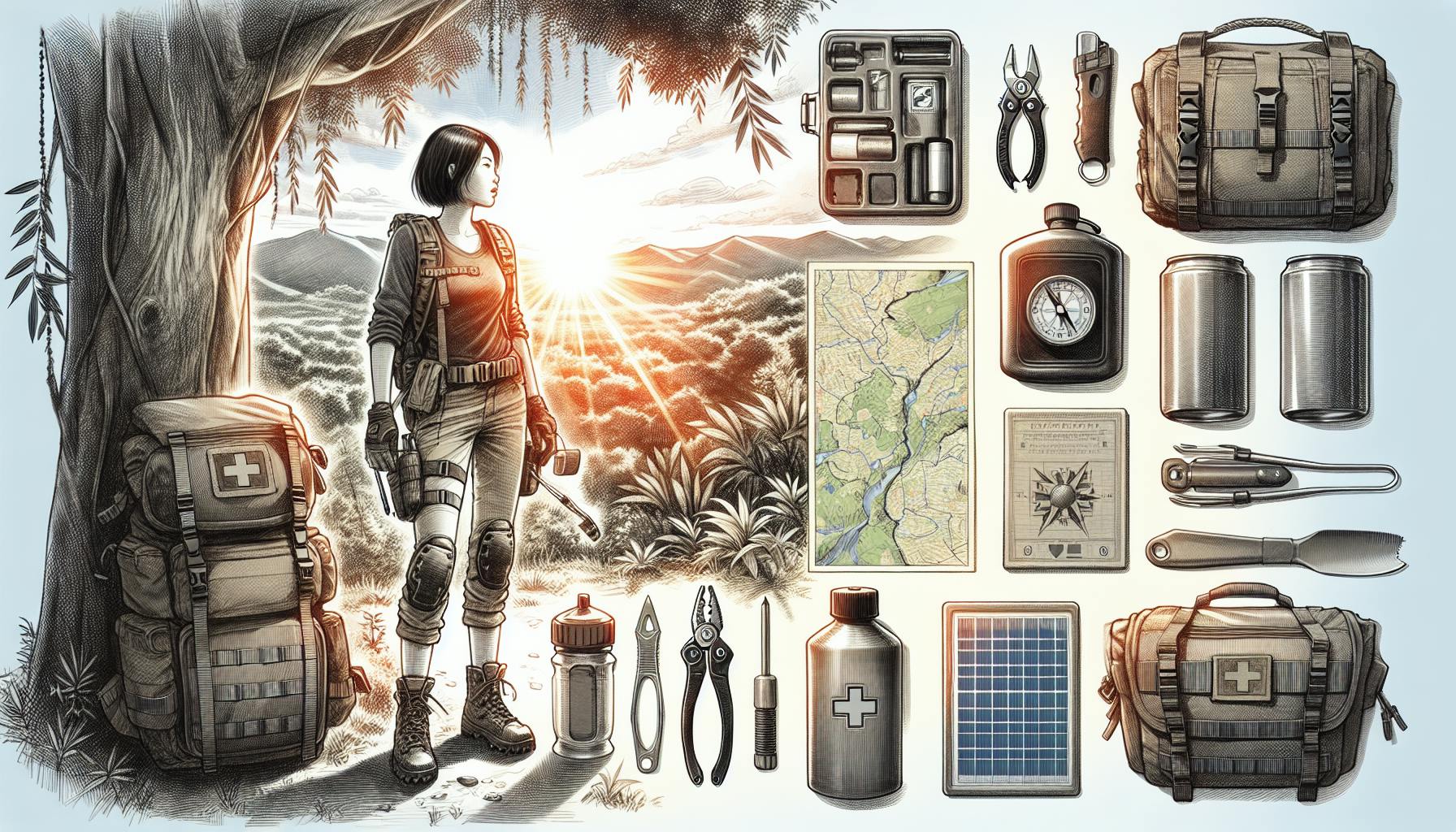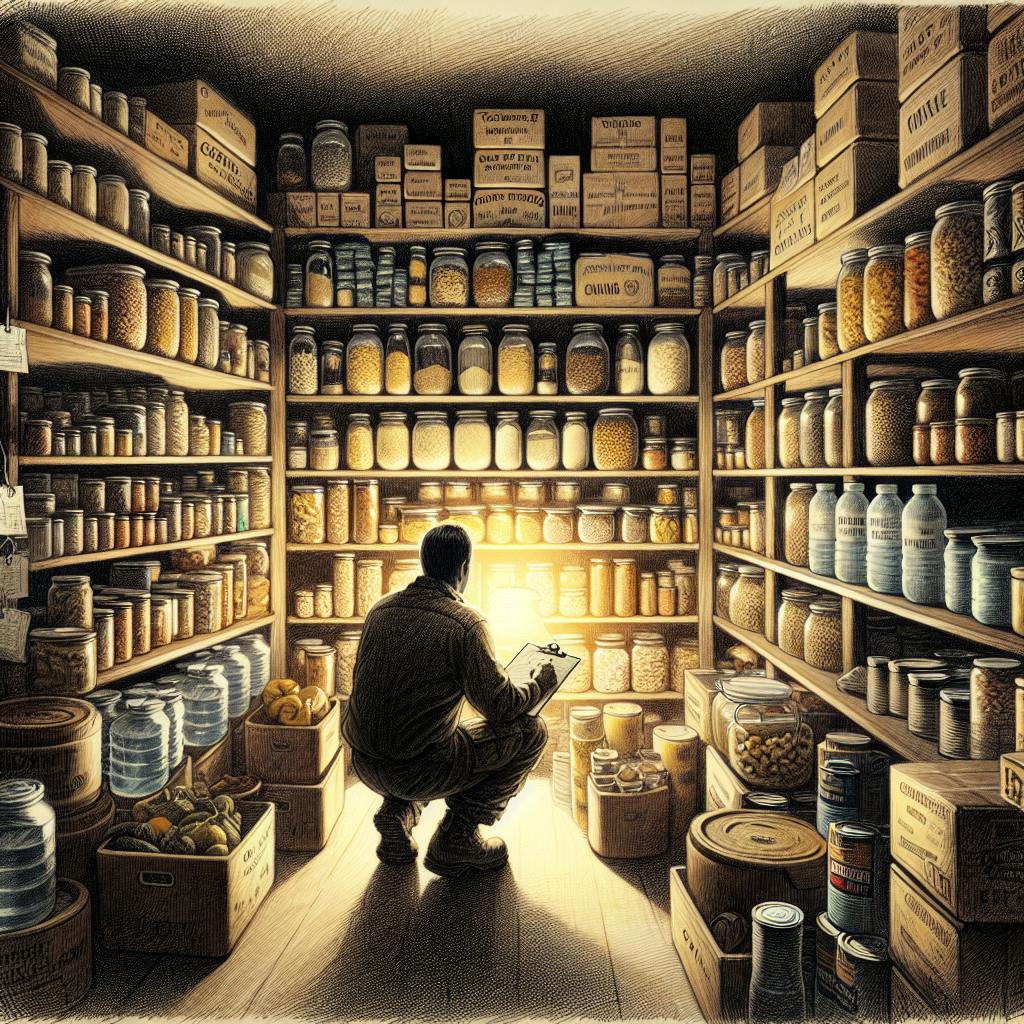Assembling a well-stocked first aid kit is an essential preparedness step that most people would agree is important for emergency scenarios.
With some thoughtful planning tailored to your household's unique needs, you can create a comprehensive DIY first aid kit that goes beyond basic wound care to address a wide range of potential medical situations.
In this article, you'll discover the recommended contents to include in a robust home first aid kit, from everyday essentials to supplies that could save a life in a crisis.
Preparing for the Unexpected with a First Aid Emergency Kit
Assembling a well-stocked first aid kit allows you to be prepared for medical emergencies. When creating your kit, tailor it to your family's specific needs and the situations you may encounter.
Here are some tips for building an effective first aid emergency kit:
- Essentials - Start with essential medical supplies like bandages, gauze, medical tape, antiseptic wipes, antibiotic ointment, latex gloves, scissors, tweezers, a thermometer, and over-the-counter pain medication. Make sure to stock age-appropriate dosages.
- Personalize - Consider your family's unique needs. Include any necessary prescription medications, EpiPens for allergies, inhalers for asthma, etc.
- Emergency Items - Prepare for serious injuries by packing sterile dressings, trauma pads, a CPR mask, and other emergency first aid tools.
- Extras - Customize further with supplies for likely emergency scenarios - blister care for hikers, aloe vera gel for sunburns, etc.
No matter what you include, be sure to check expiration dates every 6 months and replace any expired or missing items. Keeping your first aid emergency kit up-to-date ensures you'll be ready when every second counts.
What 10 items would be in a first aid kit?
Here are some essential items to include in your first aid kit that can help address common injuries until medical care arrives:
Bandages and Dressings
- Adhesive bandages of multiple sizes
- Gauze pads and rolls
- Medical tape
- Antiseptic wipes
Medications
- Pain relievers like ibuprofen or acetaminophen
- Antihistamines for allergic reactions
- Antacids for upset stomach
Tools
- Tweezers for splinters
- Scissors for cutting bandages
- Safety pins to secure dressings
Other Supplies
- Exam gloves to protect hands
- Cold packs to reduce swelling
- CPR breathing barrier
Aim for portability while being equipped for likely scenarios. Customize based on your family's needs and medical conditions. Check expiration dates and restock any depleted items. With a well-stocked first aid kit, you can quickly respond to cuts, burns, sprains and other common injuries.
What goes in an emergency first aid kit?
A basic first aid kit for emergencies should contain essential medical supplies to treat minor injuries and stabilize more serious conditions until professional medical care can be accessed. Here is a recommended list of 10 must-have items to include in your emergency first aid kit:
- Adhesive bandages (plasters) in a variety of sizes - these help cover and protect minor cuts and scrapes.
- Gauze pads and rolls - sterile dressings to control bleeding and wrap injuries. Include a variety of sizes.
- Adhesive tape - useful for securing dressings and bandages.
- Antiseptic wipes - to clean wounds and prevent infection.
- Antibiotic ointment - aids healing and prevents infection in cuts and scrapes.
- Aspirin - helps relieve pain.
- Exam gloves - protect hands when treating others.
- CPR breathing barrier - allows delivery of rescue breaths.
- Instant cold packs - reduce swelling and manage pain.
- First aid instruction booklet - provides information on how to respond to medical emergencies.
Customize your first aid emergency kit based on your family's needs. Be sure to check expiration dates every 6 months and replace any used items promptly. Keep your kit in an easy to access location to be prepared for an emergency.
What is the difference between emergency kit and first aid kit?
A first aid kit is designed to provide basic medical supplies and care in the event of minor injuries or medical situations. This typically includes bandages, gauze, antiseptic wipes, antibiotic ointment, medical tape, scissors, tweezers, a thermometer, and over-the-counter medications like ibuprofen or acetaminophen.
An emergency or disaster preparedness kit contains supplies needed to survive for several days in the event of a major emergency like a natural disaster or power outage. This would include food, water, batteries, flashlights, blankets, cash, and other gear to meet basic needs for safety and survival.
The main differences are:
- Purpose - First aid kits treat injuries while emergency kits sustain life
- Supplies - First aid kits have medical items and emergency kits have food, water, shelter items
- Duration - First aid kits provide basic care for hours or days. Emergency kits provide sustenance for multiple days or weeks
It's crucial to have both types of kits fully stocked and easily accessible. A first aid kit handles medical situations as they arise. An emergency kit provides essentials if you need to evacuate quickly or shelter-in-place without power or water. Maintaining both kits will equip you to handle minor to major crises effectively.
What is in a basic emergency kit?
A basic emergency kit should contain essential supplies to help you and your family survive for at least 3 days in the event of an emergency situation or disaster. Here are some of the most important items to include:
Food and Water
- Canned goods and non-perishable foods like granola bars, dried fruits, nuts, etc. Avoid foods that will make you thirsty.
- At least 1 gallon of water per person per day for 3 days
- Manual can opener
Communication and Information
- Battery-powered radio and extra batteries
- Flashlight and extra batteries
- Cell phone charger and portable charger/power bank
- Local map with evacuation routes highlighted
Safety and Comfort
- Basic first aid kit
- Whistle to signal for help
- Dust masks
- Moist towelettes and garbage bags
- Basic tools like a pocket knife, duct tape, and zip ties
- Extra cash
Clothing and Bedding
- At least 1 change of clothes per person
- Sturdy shoes/boots and socks
- Sleeping bags or blankets
- Hat and gloves if in cold climate
Customize your basic 3-day emergency kit based on your family's unique needs, ages of members, health conditions, pets, climate where you live, and potential risks in your region. Update food/water every 6 months and check battery expiration dates once a year.
sbb-itb-b932644
Understanding the Essentials: What to Include in Your First Aid Kit for Home
A well-stocked first aid kit is an essential part of emergency preparedness. Having the right supplies on hand can help you effectively treat minor injuries and keep your family safe until professional medical help arrives. When creating a first aid kit for your home, focus on including items that address the most common medical situations.
Top 10 Items in a First Aid Kit
These 10 items form the foundation of a reliable home first aid kit:
- Sterile gauze pads and rolls - stop bleeding and dress wounds
- Adhesive bandages - protect minor cuts and scrapes
- Antiseptic wipes - clean wounds and prevent infection
- Antibiotic ointment - treat and prevent infection
- Medical tape - secure dressings and bandages
- Scissors - cut tape and bandages
- Tweezers - remove splinters and debris
- Thermometer - monitor body temperature
- Anti-diarrheal medication - treat dehydration
- Pain and fever relievers - reduce pain, fever, and inflammation
Expanding Your Kit: 20 Items for Comprehensive Coverage
To expand your first aid preparedness, consider adding:
- Instant cold packs - treat swelling and bruises
- Bandage strips and butterfly closures - hold cuts closed
- Elastic wrap - stabilize injuries
- Eye wash - flush eyes
- CPR mask - safely perform CPR
- Blanket - retain body heat
- Flashlight - illuminate injury
- Whistle - signal for help
- Gloves - prevent bodily fluid exposure
- Splint - immobilize broken bones
- Triangular bandage - create sling
- Safety pins - fasten slings and bandages
- Soap - improve wound cleaning
- Pencil and paper - record vital signs and events
- Cell phone charger
- Water - prevent dehydration
- Snack bars - boost energy
- Emergency numbers list
- First aid manual
- Medication list
First Aid Kit for Home: Tailoring to Your Living Environment
Evaluate the layout and risks within your home to guide first aid kit customization. For example, include burn treatments if you have a fireplace or workshop, sting relief if near bees/wasps, or anti-nausea/motion sickness medicine for boats. Consider all family members too - add child doses of medicine or mobility aids if elderly relatives visit often.
Children and Elderly: Special Considerations
Children and older adults have increased vulnerability in emergencies. For kids, pack small bandages, children's medications, thermometer, snacks, and comfort items. For elderly, include any daily prescription medications, extra doses of pain relievers, blankets, medical notes, and emergency contacts.
Maintenance: Keeping Your First Aid Kit Up-to-Date
Check expiration dates every 6 months and replace expired or depleted items. Replenish after use. Consider annual first aid/CPR refresher courses. Store in easily accessible area. Having an organized, well-maintained first aid kit saves critical moments in an emergency.
Selecting the Right Container: Red Cross First Aid Kit Standards
When selecting a container for your first aid emergency kit, it's important to follow the Red Cross guidelines for portability, durability, organization, customization, and visibility.
Portability and Accessibility
Choose a container like a backpack or plastic storage bin that has handles and a shoulder strap. This makes it easy to grab and go in an emergency situation where every second counts.
Durability and Protection
Ensure your first aid kit container is made of waterproof fabrics or plastic that will withstand different environments and conditions. The supplies inside need to be kept dry and protected.
Organization and Efficiency
Use pouches, compartments, and clear labeling to separate and identify first aid contents. This organization ensures you can quickly and efficiently find what you need.
Customization for Personal Needs
Pick a kit that has room for you to add your own specialized supplies as needed. Personalize it with any specific medications, treatments, etc. your family requires.
Visibility for Quick Identification
Get a bright red or orange bag/container and label it clearly as a FIRST AID KIT. This high visibility and clear labeling helps you and others quickly locate it in an emergency.
Professional First Aid Kit: Equipping for Serious Emergencies
Stock up on basic medical gear like bandages, gauze, tape, antibacterial ointment, trauma shears, instant cold packs, cotton swabs, medical gloves, tweezers, thermometer, safety pins, emergency blanket etc.
Wound Care and Management
Having the proper wound care supplies is critical for effective first aid. Adhesive bandages, gauze pads, and medical tape allow you to dress and protect minor wounds. Antibiotic ointment helps prevent infection in small cuts and scrapes. Butterfly closures are useful for holding deeper lacerations closed. Tailor your wound care supplies to the potential injury risks faced.
Essential Tools for Emergency Response
Specialized tools equip first responders to immediately assess and treat injuries. Trauma shears quickly cut away clothing to expose wounds. Tweezers remove splinters and debris from skin. Digital thermometers check for dangerous fevers indicating infection or heat stroke. Safety pins temporarily secure dressings and slings.
Protection Gear for First Responders
Caring for others poses contamination risks from bodily fluids. Nitrile gloves prevent direct contact and cross-contamination between patients. Face masks or respirators reduce exposure to airborne germs. This protective gear safeguards both caregiver and patient.
Comfort and Relief Supplies
Tending to discomfort promotes patient well-being. Instant cold packs alleviate swelling from sprains and strains. Anti-itch creams soothe bug bite reactions. However, avoid stocking expired medications or perishable supplies. Routinely inspect and replace degraded components.
Advanced Care Items
Serious trauma may require advanced treatments. Consider adding suture kits for wound closure, burn dressings to protect severe burns, hemostatic agents to stop heavy bleeding, or a CPR mask for assisted breathing. Include based on your medical skill level and likely emergency scenarios.
Custom Medical Supplies: Personalizing Your First Aid Emergency Kit
Tailor your first aid kit to meet your family's specific medical needs. Include prescription medications, medical devices for managing chronic conditions, assistive devices for maintaining independence, and emergency contact information.
Prescription Medications and Dosage Information
Pack at least a week's supply of essential prescription medications for family members, along with details like doctor's name, pharmacy phone number, prescription numbers, and dosage/frequency instructions. Update medication list annually or when prescriptions change.
Medical Devices for Chronic Conditions
If family members have chronic medical conditions like allergies, asthma, or diabetes, include those medical devices in your first aid kit. For example, include epi-pens for life-threatening allergies, inhalers for asthma attacks, and blood sugar monitors for diabetes management.
Assistive Devices for Independence
Consider packing an extra pair of prescription glasses or contacts in case of damage. Hearing aid batteries can also be useful. Mobility aids like foldable canes or crutches may provide needed support during an emergency.
Emergency Contacts and Medical Information
Create a document with current emergency contacts, medical conditions, and medication details for each family member. Update this annually or when health changes occur. Having this vital information easily accessible can save critical minutes during an emergency.
Specialized Kits for Specific Needs
Make separate first aid kits for pets, outdoor activities like hiking or boating, or for your vehicle. These specialized kits can be tailored to likely risks and should contain items like bandages, antiseptic, pain relievers, gloves, blankets, etc. Rotate perishable medical supplies annually.
Concluding Thoughts: Your First Aid Emergency Kit Readiness
Assembling your own first aid kit allows you to prepare for the specific medical needs of your family during emergencies. Follow this guide to put together a portable, visible, and well-stocked kit.
The key is customizing your kit to your situation. Consider factors like:
- Your family's common injuries and medical conditions
- The types of outdoor activities you regularly participate in
- Any prescription medications taken routinely
- The ages of family members
For example, if you have young children, make sure to include kid-friendly bandages, antibiotic ointment, and any pediatric medications they take. Or if you frequently go on hiking trips, pack supplies to treat sprains, burns, and blisters.
No matter what you include, be sure to store your first aid kit in an easy-to-access spot and check expiration dates every 6 months. An out-of-date kit won't do you much good in an emergency! Proper preparation takes some work upfront, but it's worth it for the peace of mind.
With a customized first aid kit, you'll have the essential medical gear on hand to handle injuries and illnesses - whether at home or on the go. And you'll be ready to face emergencies with confidence, knowing you can provide basic care until professional help arrives. So take the time to tailor your kit to your family's unique needs. It's an important step towards emergency preparedness and self-reliance.


